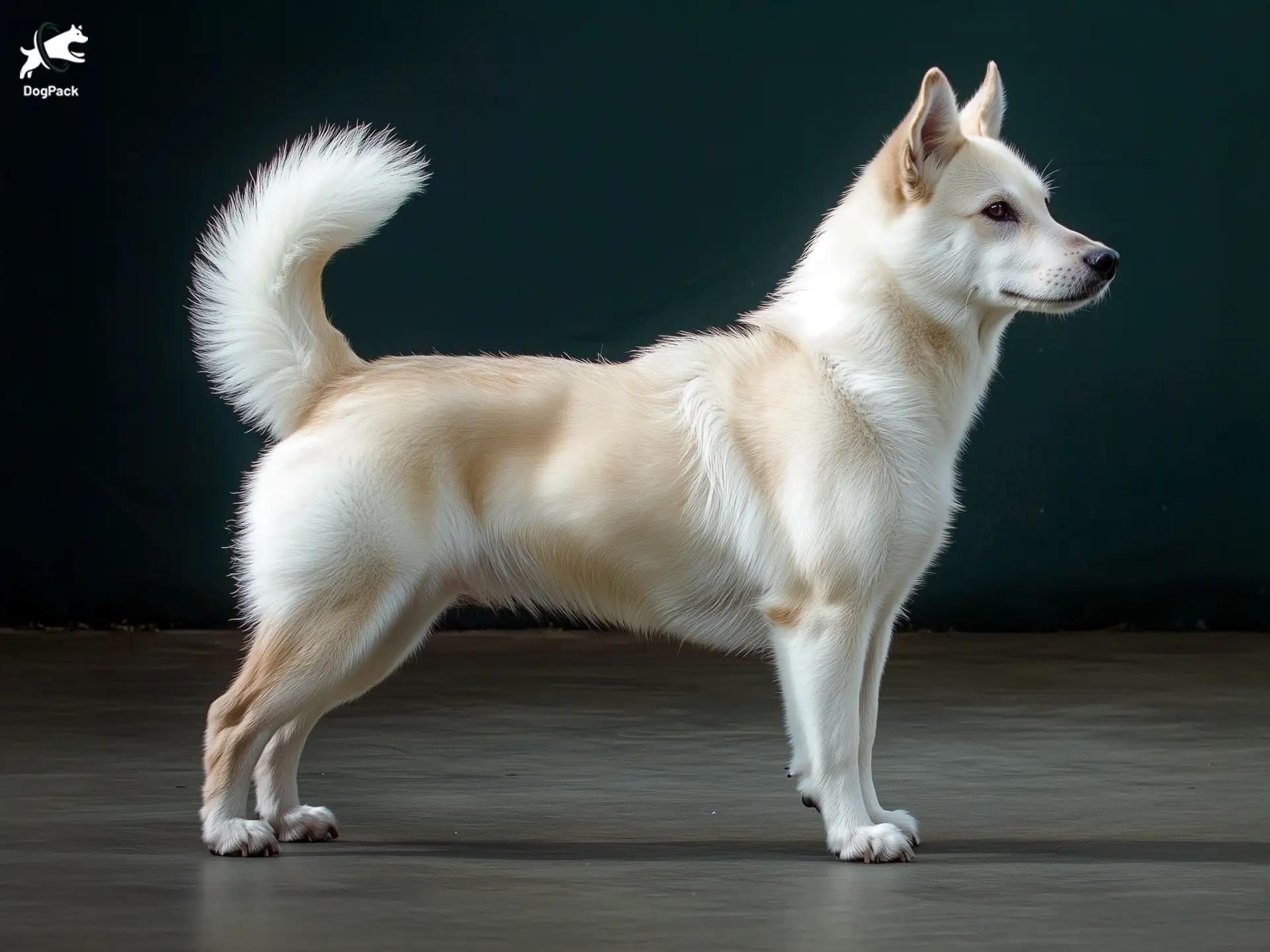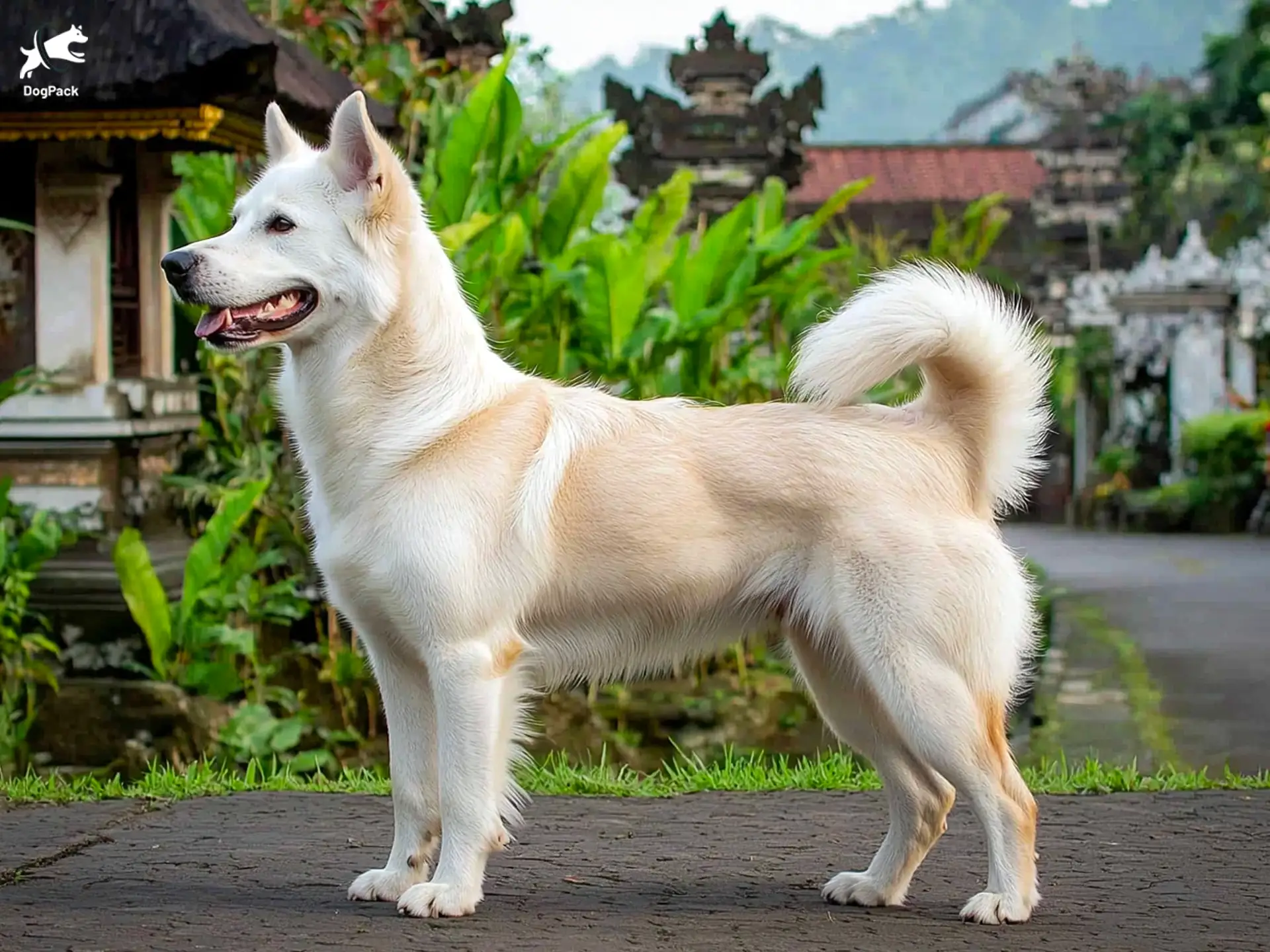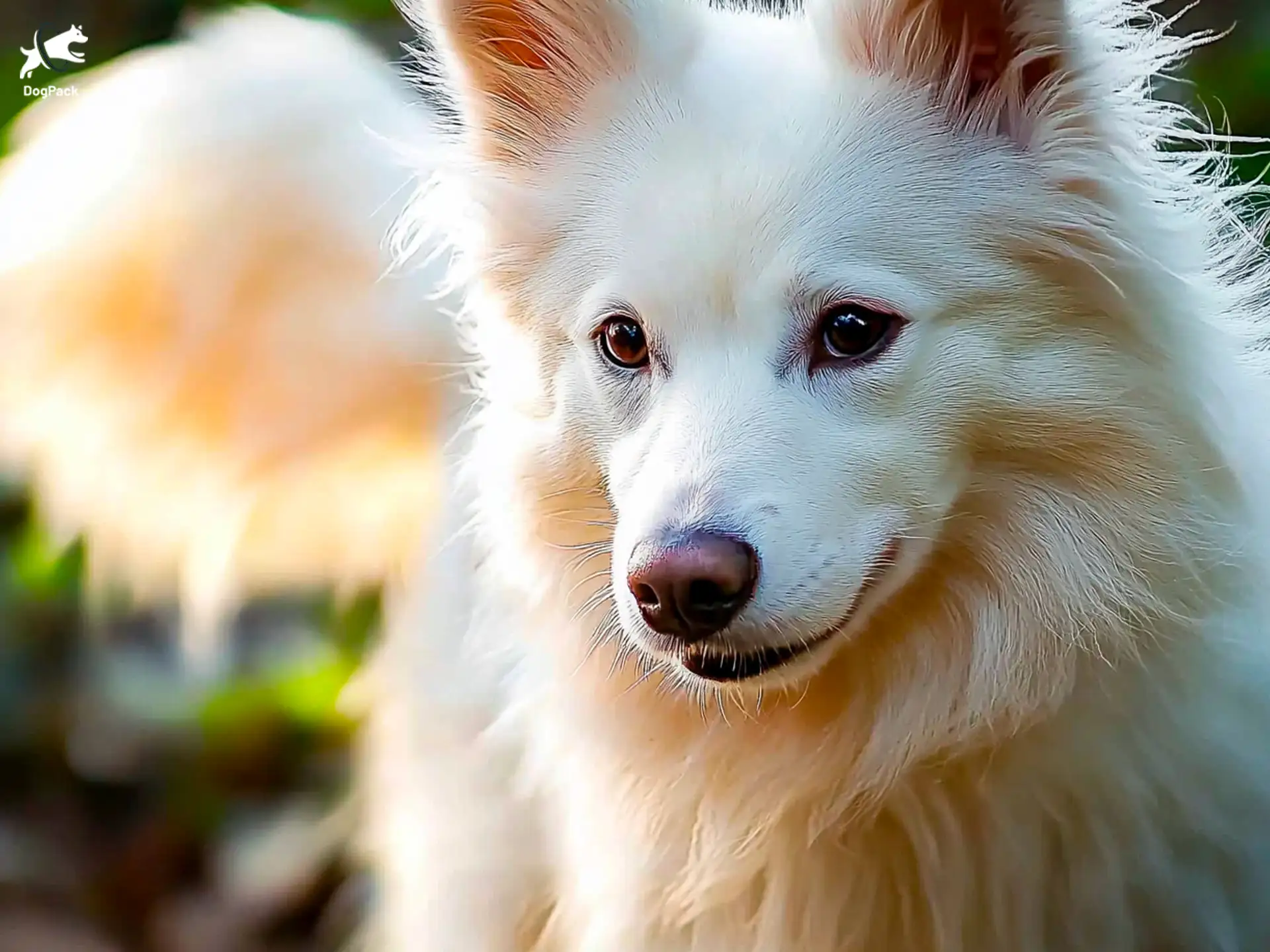Kintamani Dog Breed Info & Overview
This rare pup from the highlands of Bali offers an intriguing blend of loyalty, adaptability, and natural charm. With a striking appearance and a spirited attitude, the Kintamani quickly captivates dog lovers worldwide. Whether guarding your home or enjoying a romp outdoors, this agile companion stands out for its warm demeanor and devotion.
Characteristics
Pictures
Breed History
When you wander through the misty slopes of Bali’s mountains, you might encounter a dog that has been part of the island’s local culture for generations. Though its exact origins remain somewhat mysterious, most experts believe it descended from ancient Indonesian dogs bred to adapt to Bali’s rugged terrain. Revered by villagers, these pups served as loyal companions and protectors of rural homesteads.
Over time, careful selection led to a more uniform look, complete with a plush coat and erect ears. The Bali-based name was a natural choice, reflecting the high-altitude region known as Kintamani. Though still rare outside Indonesia, this dog has started capturing global attention for its striking features and sturdy constitution. They’ve also become a subject of interest for canine researchers worldwide.
Today, the breed is cherished for its blend of local heritage and modern adaptability. While many remain on their native island, some have journeyed abroad, sparking curiosity among enthusiasts of rare dog breeds. Official recognition has been slow but steady, with more organizations examining its unique lineage. This backstory highlights how tradition and selective breeding helped shape an impressive canine from the heart of Bali.
Temperament, Personality
Expect a mix of vigilant guard dog and gentle friend when bringing home one of these island natives. They’re known for showing great loyalty to their families, often forming strong bonds with each household member. Strangers might be greeted with initial caution—this natural wariness makes sense for a pup historically tasked with safeguarding remote villages.
Playful and energetic, they enjoy interactive games and mental stimulation. If introduced early to children and other pets, they generally adapt well, but firm, consistent socialization is key. This dog thrives on trust; once earned, they’ll stick by your side through thick and thin. A well-socialized Kintamani will typically be both an alert protector and a devoted snuggle buddy.
Their personality can include a hint of independence, reflecting their background as free-roaming island dogs. However, they still relish family time, responding positively to gentle leadership and routines. If you appreciate a dog that’s neither too clingy nor too aloof, this breed offers a balanced approach. With patience and understanding, they can adapt to bustling households and quieter homes alike.
Physical Characteristics
At first glance, you’ll notice the bright, almond-shaped eyes and erect ears that give this dog an alert and confident look. The dense double coat—often white or cream—helps protect them from the chill of Bali’s mountainous regions. A bushy tail curves slightly over the back, adding to their distinctive silhouette and making them stand out from other medium dog breeds.
Their body is athletic, built for climbing rugged hills and sprinting across challenging terrain. Front legs are sturdy, giving them a firm stance, while hind legs offer powerful leaps and swift directional changes. The overall frame is well-proportioned, striking a balance between agility and robustness. Though not massive, these dogs carry themselves with a sense of poise and readiness.
You’ll often see them strutting with a confident gait, especially when they spot something of interest. Coats can vary in texture—some are plush and thick, others slightly straighter. In their native land, color variations also occur, but the classic white Kintamani remains most iconic. This breed’s blend of charm and athletic build easily turns heads, reflecting its proud Balinese heritage.
Health Issues
Like many purebred dogs, they can be prone to certain genetic conditions. Hip dysplasia occasionally appears, as it does in numerous medium-sized breeds. Regular vet checkups, including X-rays when recommended, can help catch any skeletal concerns early. Responsible breeders often screen for these issues to ensure healthier pups.
Some Kintamani dogs may also experience skin sensitivities, especially if their coats aren’t cared for properly. Bali’s climate is relatively humid, so dryness, mats, or infections can become problems outside their native environment. Grooming and hygiene routines tailored to their coat type can significantly reduce these risks.
Proper vaccination and parasite prevention are essential, particularly if you live in an area with ticks or fleas. Routine bloodwork can pinpoint any underlying metabolic concerns early on. With balanced nutrition and regular vet care, these dogs often enjoy a robust lifespan, easily reaching well into their teens.
Grooming Needs
Brushing your dog about twice a week helps keep that thick double coat in tip-top shape. A good slicker brush or comb can remove loose fur, prevent tangles, and reduce matting. During seasonal shedding periods—often in warmer months—more frequent grooming may be necessary to manage the extra fluff floating around your home.
Bathing should be moderate since over-washing can strip natural oils and irritate skin. Opt for a gentle, dog-specific shampoo—especially if they seem prone to dryness. Nail trims and ear cleaning should also be on your checklist. After a splash in the tub, be sure to thoroughly dry the coat to prevent hot spots or fungal growth.
Scheduling a professional groomer for occasional trims might help if your dog’s coat becomes especially unruly. However, most owners handle upkeep at home with basic tools and a bit of patience. In Bali, these dogs benefit from a tropical climate, but in other regions, humidity or seasonal changes can affect their coat. Staying consistent with a routine means a healthier, happier companion.
Exercise Requirements
A brisk walk and a playful session in the yard will go a long way toward keeping this dog content. Because of their mountain origins, they enjoy a good climb or hike if you can offer it. They’re not the type to be satisfied with a single lap around the block, so try to switch up the scenery for additional mental stimulation.
Indoor play can also work wonders. Puzzle toys or treat-dispensing gadgets often excite their problem-solving instincts. If you live in a cooler climate, remember that thick coats can help them tolerate mild cold, but they’ll still crave active games. Consistency is key—aim for at least 45 to 60 minutes of daily exercise, divided into engaging activities.
You might find that your dog also enjoys short bursts of athletic play, like fetch or tug-of-war. Varying exercises helps maintain both body and mind. For owners seeking a companion on moderate jogs or hikes, a Kintamani can be a terrific sidekick. Just be mindful of overexertion, especially if you’re transitioning from a laid-back routine to a more active schedule.
Training Tips
Early socialization is a must for this sometimes-guarded breed. Introduce them to different people, pets, and environments to build confidence and reduce wariness. Short, fun sessions using positive reinforcement—like treats or praise—work best, as these dogs can be quite sensitive if handled harshly. A well-socialized Kintamani will adapt more smoothly to city life, public outings, and family gatherings.
Because of their innate independence, keep training sessions varied to hold their interest. Repetitive drills might cause them to lose focus. Incorporate brief obedience exercises, followed by fun tasks like nose work or chasing a favorite toy. This balance of discipline and play keeps them mentally engaged, so they’re more likely to follow your lead.
Be patient, and try to spot what motivates your dog most—food, praise, or perhaps a good scratch behind the ears. Consistent boundaries set during puppyhood lead to better manners in adulthood. If you sense stubbornness creeping in, break down tasks into smaller steps. Ultimately, training should be viewed as an ongoing conversation, reinforcing the unique bond you share with your island-born companion.
Nutrition, Diet
Because they’re natives of Bali’s mountainous areas, these dogs traditionally ate a diet rich in simple proteins and locally available ingredients. High-quality, fish-based kibble can be an excellent modern equivalent, mirroring the fish they might have consumed near island coasts. Look for formulas that use real fish as the first ingredient and avoid excessive fillers, as their digestion may be sensitive to artificial additives.
Adults typically do well on two meals per day, with portion sizes ranging from 1.5 to 2 cups total, depending on activity levels and size. Kintamani dogs staying active with hikes or long play sessions might need a bit more, while those in less strenuous environments require fewer calories. Gradually adjust portions as weight fluctuates, monitoring for any gain or loss outside healthy limits.
Occasional treats like steamed rice and boiled chicken can add variety without upsetting stomachs, reflecting a bit of their island heritage. However, avoid spicy or overly seasoned foods common in some cuisines. Always provide fresh, clean water to keep them hydrated—particularly if they’re being exercised frequently. A vet or canine nutritionist familiar with Balinese breeds can offer personalized feeding advice.
Adoption, Breeders
Getting your hands on a Kintamani outside Indonesia can be tricky, so it’s crucial to do ample research. Local breed clubs and rescue organizations sometimes assist with international adoptions. Be prepared for the logistics of paperwork, transport costs, and possibly waiting lists, as this rare breed is not widely available in most countries.
Seek ethical breeders who respect the dog’s Balinese heritage and focus on health screening. Verify certifications for hips and other genetic conditions, ensuring you’re receiving a well-cared-for puppy. Explore groups like BAWA (Bali AnimalWelfare Association) for potential rescues or educational resources on the breed. If you connect with specialized clubs, you’ll gain insights into best practices for maintaining authenticity.
Always ask questions about socialization efforts, parental lineage, and living conditions before committing. A transparent breeder or rescue organization will readily share detailed veterinary records and be clear about any quirks. Check out Adoptapet.com as well for possible listings, although you may need to broaden your search. Patience often pays off, resulting in a devoted companion with a genuine Balinese lineage.
Family Pet?
If your household includes respectful kids who understand boundaries, this breed can be a fantastic friend. They’re affectionate with those they trust, and a regular play session can keep everyone happily occupied. Just remember that a confident approach and early exposure to children helps shape a balanced canine temperament.
With other pets, slow and steady introductions are the key. While these dogs can coexist peacefully alongside cats and smaller animals, they might need extra supervision at first. Their guarding instincts can manifest as territorial behavior until they’re assured everyone in the home is part of the same pack.
Because of their intelligence, they often seek engagement with family members, thriving on shared activities or training sessions. If you’re looking for an active companion to join family outings or weekend adventures, this dog can fit right in. Just ensure each family member is onboard with providing the consistency and routine this Bali native appreciates.
Right For You?
Think about your day-to-day routine: do you enjoy moderate exercise and a bit of mental challenge? A Kintamani might be an ideal partner if you can accommodate walks, grooming, and training. They aren’t couch potatoes, so a willingness to stay active is a must.
If you have limited space, like a small apartment, providing enough stimulation becomes more complex, though not impossible. This dog excels in homes with yards or near open spaces where they can stretch their legs. Ultimately, if you value a loyal, somewhat independent spirit and can invest in socialization, then this Balinese gem might shine brightly in your life.
On the other hand, families that prefer a low-maintenance pet or rarely have time for exercise may struggle. Before you commit, weigh the pros—like their striking looks and devoted nature—against their need for interaction and grooming. A well-matched home will find a faithful companion that enriches daily life with its island-born zest for exploration and protection.
Conclusion
A Kintamani brings a slice of Bali’s mountain allure straight to your living room. This breed suits owners who appreciate a watchful yet warm canine with moderate energy levels. If you embrace consistent socialization, proper nutrition, and balanced exercise, you’ll be rewarded with a loving companion eager to protect and entertain. Though still relatively uncommon, these dogs are worth the effort for those drawn to their unique charm.
FAQs
-
What makes the Kintamani different from other Southeast Asian dogs?
The Kintamani dog is one of the few recognized purebred Indonesian breeds. Unlike street dogs in Bali, they have a distinct wolf-like appearance, a thick double coat, and a curly tail. They also have a stronger territorial instinct, making them natural guardians.
-
Do Kintamani dogs have any special cultural significance in Bali?
Yes! The Kintamani is highly respected in Bali and often seen as a symbol of status and protection. Many Balinese families consider them loyal guardians of their homes and temples, and they are sometimes given as gifts to signify trust and friendship.
-
Are Kintamani dogs good for first-time owners?
While Kintamanis are loyal and intelligent, they can also be independent and strong-willed. They require consistent training and socialization from an early age. First-time owners who are patient, firm, and experienced with active breeds will have the best success.
-
How do Kintamani dogs behave around strangers?
Kintamanis are naturally wary of strangers due to their strong guarding instincts. They are not aggressive without reason, but they will alert their owners to any unfamiliar presence. Early socialization helps them differentiate between a threat and a visitor.
-
How well do Kintamani dogs handle tropical climates?
Bred in Bali’s highlands, Kintamani dogs naturally adapt to tropical climates but prefer cooler environments. Their double coat protects them from heat, but they need shade and fresh water during hotter months. Regular brushing helps prevent overheating and keeps their fur healthy.
Breed Ratings
The Kintamani is quick to learn and enjoys mental challenges. Consistent engagement prevents boredom.
They love interactive games, especially when shared with family. Always ready for a new activity.
Moderate energy means daily walks and play sessions are needed, but they don’t demand marathon runs.
Seasonal shedding can be noticeable. Regular brushing keeps fur under control.
Generally low, though caution with smaller animals is wise until they’re properly introduced.
Weekly brushing usually suffices. More frequent grooming may be needed during heavy shed seasons.
They respond well to positive methods. Stubborn streaks can appear, but patience and variety help.
They prefer company. Long stretches of isolation can lead to boredom or anxiety.
Alert barking can happen, but excessive noise is uncommon unless bored or poorly socialized.
Minimal drooling unless overheated or stressed. Generally a neat breed.
With proper introductions and socialization, they get along well. Caution is needed early on.
Typically robust with careful breeding. Some risk of hip dysplasia or skin issues.















